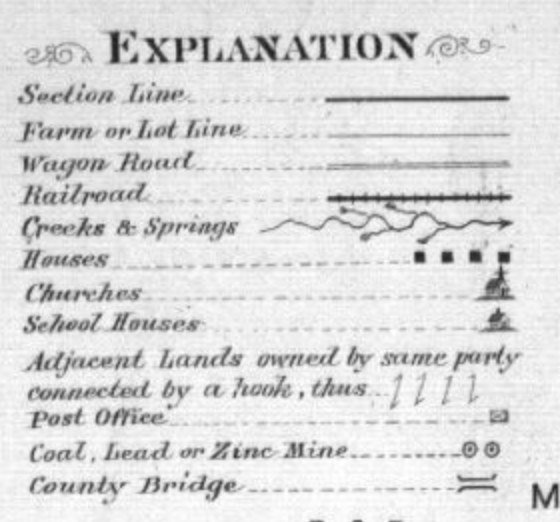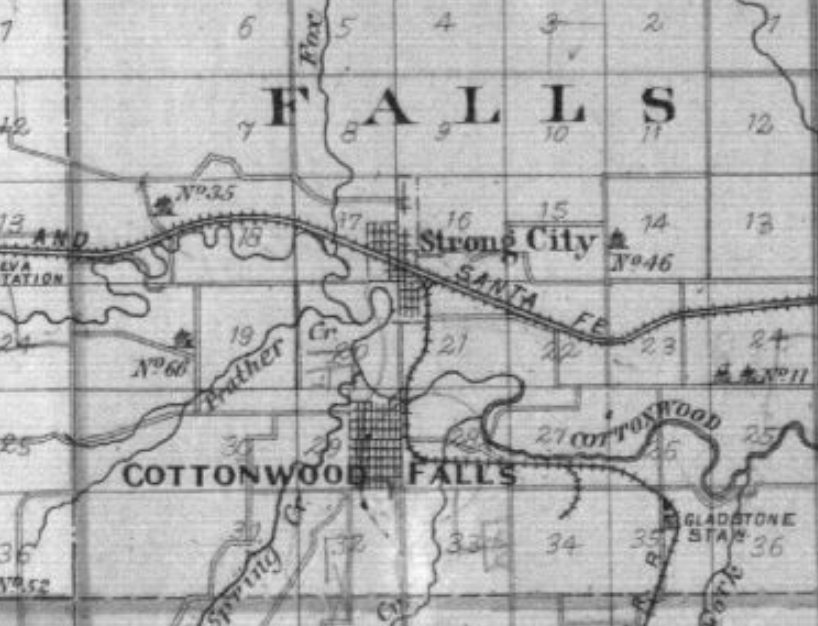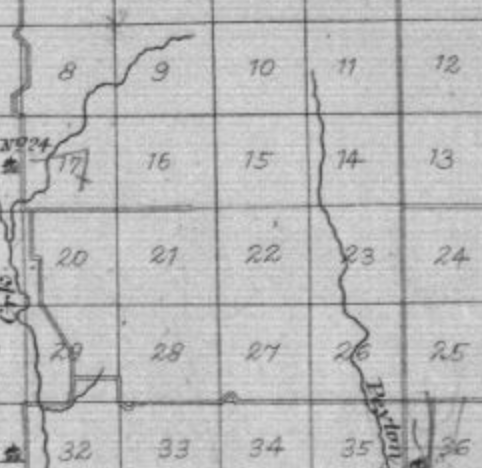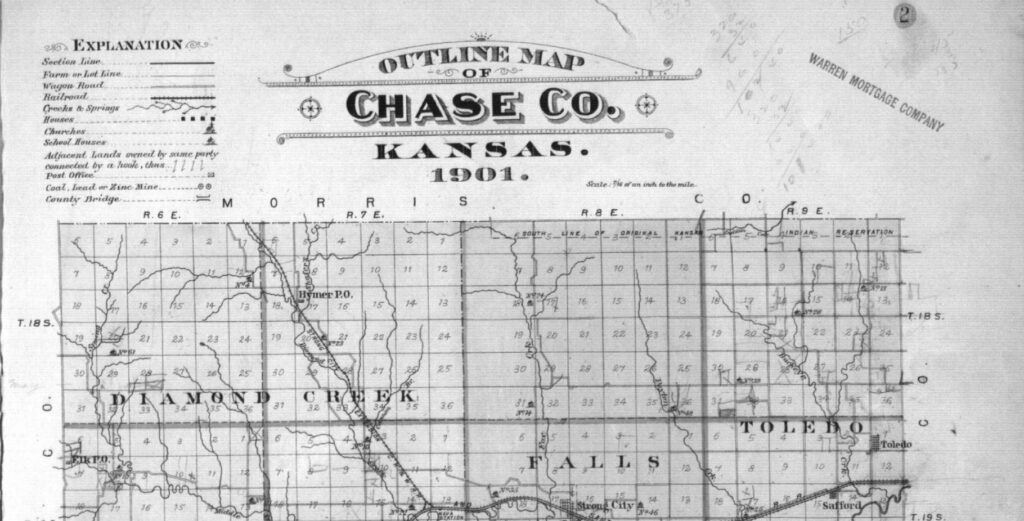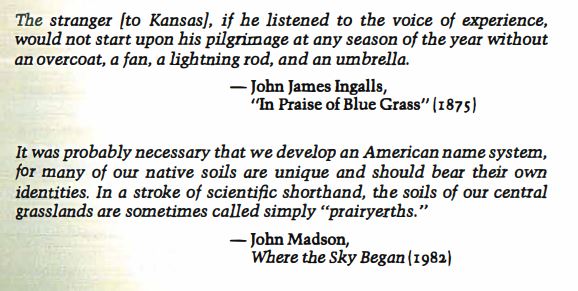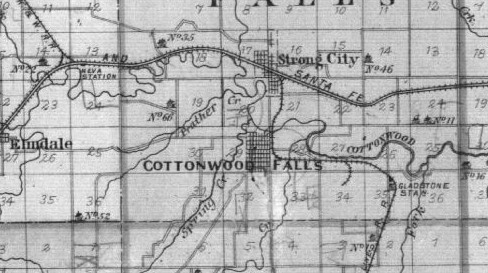

The map above is a map of Chase County, Kansas; more specifically, the map is a “plat map,” which serves to show potential surveyors how to divide property for development. The map showcases plots divided up into little, perfect squares and there’s a key that dictates where railroads lines should run and how the line should be divided up against the natural landscape.

While this map is seemingly innocent and seems simply as a way to divide land up to future prospectors, I can’t help but wonder about the erasure of the natives within the county. Within a capitalist society, everything is a commodity to be bought or sold, and land is sadly no exception to this rule. Natives, who lived on the land centuries before Europeans, were forced out and forcibly assimilated into European-based capitalism. In order to sell goods within capitalism, they have to first be given a name to make it easier for markets to understand the goods/products presented to them (or in this case land), and this map serves as a capitalistic naming tool for “Chase Country” and for the Warren Mortgage Company to more easily advertise to those looking to settle Kansas.
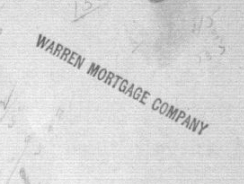
History is a subject that is impended and closely linked to rhetoric. Not to sound too Foucauldian, but names are a powerful tool. Before people moved to California, the Midwest was the “Frontier.” Places like Omaha were named so to showcase the “wildness” and the need to subjugate not just the Omaha peoples, but the land itself for Creighton telegraph lines and Union Pacific railroads- railroads to stitch the original 13 Colonies to new ones created under the guises of American Exceptionalism and Manifest Destiny. When something is named, not only does that make it marketable, but also controllable.

The erasure of names plays an important role within mapmaking. “Chase County” is a name from obvious European origin. The erasure shows the promise of the American West and the land waiting for white, eager explorers (glorified colonizers) and their families.

When I interned at the Durham Museum for the summer, I worked as a docent, doing tours for elementary school groups from all over Nebraska and Iowa. One program I had to do was the history of the pioneers of Nebraska and the settling of Omaha. I thought it was ironic that I was having to tell the history of Omaha while completely erasing the history of the people who the city was named after. After a while of following the lesson plans provided to me by the museum staff, I started to ignore them and make my own lesson plans to teach more about the people on the prairies and tell the kids that although the term “prairie” inspires images of tall, empty grasslands, there were people here centuries before white settlers. To make matters worse, I think it is rather dangerous when a city name like Omaha is commandeered into regular American vernacular, without thinking about the origins of the word. Other places include Apalachicola in Florida or Tallahassee or Sioux City; honestly, the list goes on and on. Cartography serves to not just showcase land, but to claim it, as well.




